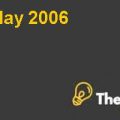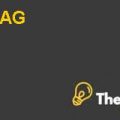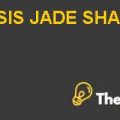BCE in Play Case Study Solution
The BCE is one of the leading and largest telecommunication companies.Since, the wire line business went off into the market and trend for the wireless services increased, BCE gained potential growth in the market because, the company had rapid development in the wireless market and it had eliminated the wire line competitors.
The company’s executive leadership team developed a potential growth-based model for the company to convert 70% of the company’s wire line business to wireless businesses such as wireless services, video, data and high-speed internet. Furthermore, the BCE has been very conscious about the value of shareholders. Thus, it has maintained growing shareholders value.
The private equity firms are the companies that purchase private companies to earn handsome return. The source of capital for those companies is always from institutional investors, corporate and public pension funds, insurance companies, foundations, and some wealthy individuals.
Typically, these private equity firms require IRR of 20% to 30% from an investment for a period of 5 to 10 years, then they prepare for the exit strategy right after when market conditions are supporting to an IPO. The private equity firms are held by the general partners. The major drive force for the equity firms is return on investment. But, in contrast if other industrial competitor is bidding for the company then there would be synergetic benefit to the acquirer.
The synergetic benefit can be defined as BCE has good distribution platforms in the market that would benefit any acquirer. Similarly, the BCE has many potential capabilities that could outperform any other competitors in the market.
Therefore, many companies are interested in BCE and the sole reason is that company has good management which pursues strategic approach to market, and the company is market-oriented with excellent, experienced R&D team, and most disruptive and is the most innovative corporation in terms of products and services. So, it has potential that would benefit any acquirer as a synergetic effect.
The company’s comparable analysis gives preferable analysis of the industry. The analysis includes the P/E multiple and enterprise multiple. These two multiples show much more about the operational efficiency, and financial feasibility of the company.
The P/E ratio shows the operational efficiency and future growth prospect by anticipating that company with lower P/E ratio indicates that it has low growth and have no expansion plan currently and it has been paying out dividend in full.
The enterprise multiple is used to compare with the industrial average. So, higher enterprise multiple would indicate higher efficiency and good profitability. Therefore, it can be determined that transaction analysis only indicates the enterprise multiple and premium price percentage which is insufficient for analyzing the company in the industry.
Question 2
The net worth refers to the value of the company after paying all the liabilities. Such as Net Worth= (Total assets-Total liabilities). The net worth can also be concluded through the discounted cash flow method by calculating free cash flows that a firm would generate in the future, and then discounting these cash flows to present value to approach fair value of the firm.
Furthermore, discounted cash flow method is much preferable in valuing the company than using the multiple to value the firm. Because, in free cash flow method the working capital, and capital expenditure is considered in the valuation asit is major source of cash out flow.
On the other hand, in multiple EBITDA there is no account for the capital expenditure of the company since capital expenditure is the major source of cash outflow. Thus, discounting free cash flow method is much more appropriate for valuing the company because, it gives a fair and true value of the company.
Also, the discounted cash flow method gives cumulative discounted free cash flows for the five years which is $10,815 million. The terminal value of the company is $27,891 million, and terminal value is the long-term value of the company for infinity time period. It is calculated as last year’s free cash flow divided by discount rate minus terminal growth rate.
Furthermore, in order to discount the free cash flows WACC was calculated as 7.4% by the provided data in the case. After discounting all free cash flows of the firm the enterprise value after adding terminal value is $38.7 billion. However, the firm has been considering to sell its non-core assets that would also add value to enterprise. The value of non-core assets is $12,459 million so total value of the firm is $51.1 billion. So, I would prefer the discounted cash flow method rather than the multiple EBITDA.
Question 3
Internal rate of return is a technique to evaluate the potential return on investment. The higher the IRR,higher the return associated with the investment, and there are greater chances that investment would be accepted to go with. So, it can be determined that IRR is used to evaluate the multiple investment opportunities present in the market........................
This is just a sample partial work. Please place the order on the website to get your own originally done case solution.











